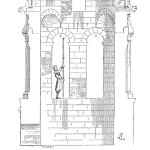
Why We Use Statistics
podcast episode with speaker Fred Schenkelberg
You may fondly, or most likely not fondly, remember your undergraduate course on probability and statistics. The calculations of various winning hands with card games were interesting and connected to the early ‘invention’ of probability and statistical methods. Yet, the jar with colored beads was rather boring.
From drive time to upload speeds, from production output per hour to defects per unit, we are surrounded by things and processes that vary. With most things, there are many factors at play contributing to variation. Those variations and the means to discuss them in a meaningful way are the essence of statistics.
Let’s explore the many ways we use, or should use, statistics in our engineering role. From gathering data to presenting, from analyzing to comparing, we have a wide range of tools available that ‘probably’ (pun intended) will have a ‘significant’ (did it again) impact on your ability to make a difference with what you do.
This Accendo Reliability webinar was originally broadcast on 8 February 2022.
Related Content
The Fundamental Thing to Know from Statistics for Design Engineering episode
Reliability and Statistics episode
Statistics for Reliability Engineers episode
Statistics, Mechanisms, Facilitation episode
Practical Way to Learn Statistics episode

Making Use of Reliability Statistics
Let’s find the motivation to use reliability statistics and find the resources to learn the statistical tools necessary to succeed.

R Software and Reliability
Let’s explore R software's many capabilities concerning reliability statistics from field data analysis, to statistical process control.

Reliability Distributions and Their Use
Let’s explore an array of distributions and the problems they can help solve in our day-to-day relaibility engineering work.

Practical Application of DOE
Perry discusses the basics of DOE (design of experiments) and fundamentals so you can get started with they useful product development tool.

Fundamentals of Sample Size Determination
Let's discuss the 6 basic considerations to estimate the necessary sample size to support decision making.

Fundamentals of Measurement System Analysis
When we make a measurement, we inform a decision. It’s important to have data that is true to the actual value.

Creating Effective Reliability Graphics
One of the first things I learned about data analysis was to create a plot, another, and another. Let the data show you what needs attention.

PDFs, CDFs, and other ‘Fs’ — What the hell are they?
If you want a really easy introduction or review of these functions that help inform a decision – then check out this webinar.

Discrete Distributions
Sometimes we have to work out how many of them we need (if they make up a fleet) or how many spare parts we need to keep them running.

Why We Use Statistics
Let’s explore the ways we use, or should use, statistics as engineers. From gathering data to presenting, from analyzing to comparing.

How to Check a Regression Fit
Let’s explore what residuals are, where they come from, and how to evaluate them to detect if the fitted line (model) is adequate or not.

Basic Mathematical Symbols and Stuff
This webinar is a light (re)introduction into common mathematical symbols used in many engineering scenarios … including reliability.

Confidence in Reliability
Reliability is a measure of your product or system. Confidence is a measure of you. But we often forget this.

Practical Measurement Systems Analysis for Design
How to calculate Gage discrimination - the more useful result for a design situation, and even how to use it for destructive tests.

What is the Weibull Distribution?
For those who conduct reliability data analysis … or turning a jumble of dots (data points) into meaningful information

Where does the Bell Curve come from?
It is not just a ‘pretty shape’ that seems to work, It comes from a really cool physical phenomena that we find everywhere.

Fundamentals of Hypothesis Testing
Let’s examine a handful of parametric and non-parametric comparison tools, including various hypothesis tests.





 Ask a question or send along a comment.
Please login to view and use the contact form.
Ask a question or send along a comment.
Please login to view and use the contact form.
I like to oboe introduction music. Is that another Reicha or Danze quintet?
Thank you for the plea to use statistics. It is hard to imagine being able to do reliability work without statistics. Histograms and plots are fine, if you have the data. Reliability statistics deals pretty well with censored data, because we had to. Dare I recommend that ships and returns counts are also statistically sufficient to make nonparametric estimates of field reliability and failure rate functions. Do the best you can with available data, and figure out the marginal cost and value of additional and better data!
Great presentation